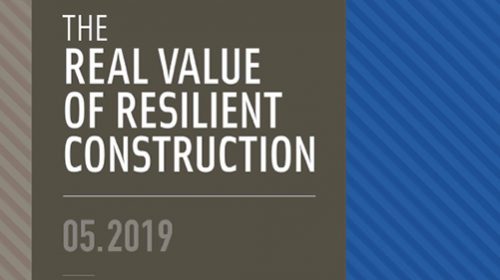A new Portland Cement Association report presents historical data, evidence from external sources, and structural material comparisons supporting the premise: Cast-in-place or precast concrete, or concrete masonry construction methods lead to longer lasting buildings owing to their ability to stand up to normal wear and tear plus resistance to extreme weather events.
|
|
| Report is posted at www.cement.org/resilience. |
“The Real Value of Resilient Construction” addresses design, engineering and life cycle criteria for owners and lawmakers or officials behind policy affecting public or private building design. “U.S. taxpayers cannot afford to continue building and rebuilding the way we did in the past. Strong, robust structures ensure community continuity and provide long lasting value for scarce taxpayer dollars,” says PCA CEO Michael Ireland, emphasizing an industry position as Congress and government agencies take stock of escalating post-disaster costs rooted in sub-par construction.
Between 1996 and 2014, the National Weather Service finds, damages in the United States due to hazards (hurricanes, tornadoes, floods, earthquakes, wildfires, etc.) surpassed $375 billion. Costs tied to natural disasters in 2017 alone reached $307 billion, according to the National Oceanic and Atmospheric Administration. “The Real Value of Resilient Construction” notes that reinforced concrete structures reduce recovery costs after disasters hit, while the upfront costs of incorporating resilient concrete features are likely to save money in the long run. “Concrete systems can be competitive at every level of resilience. There is usually a concrete solution that fits the needs and budget of any project,” the report affirms.
“Real Value” also looks at how concrete is the basis of new “green” buildings, since structures that last longer equate to a lower life cycle environmental footprint. “Concrete structures are the backbone of modern society, including residential, commercial, public, and industrial applications,” authors argue. “High-use areas, in particular, benefit from its strength and durability. And concrete provides another benefit: It can serve as the structural system and architectural finish.”
MIT CSHUB RESEARCHERS MODEL ASR GEL’S DELETERIOUS TRAJECTORIES
 |
| CSHub researchers picture pure silicate in a wet environment, calling the chains’ structure “a complex 3D skeleton” with branching and silicate rings. Their “Simulating the Formation of ASR Gels” Research Brief is posted at www.cshub.mit.edu. ILLUSTRATION: Concrete Sustainability Hub |
